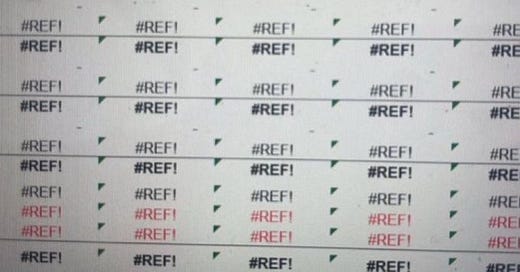We survived another week, which is no small thing to say, and oil finally broke the trend and ended up week-on-week despite the massive volatility we’ve seen across the markets.
We had some oil-specific news, but most of our attention is rightly focused on the money markets and the dollar, since the moves in flat price are now much more correlated with sentiment in equities. Oil is at the mercy of flows and the broader battle in the bond markets, and when it comes to tariffs, it’s taken a back seat.
Every asset class is correlated right now—escalation, de-escalation, recession or not, oil couldn’t care less. Now the focus is on reviving inflation, and oil as a hedge is no longer working... that role has been handed to gold.
Oil and bond yields had been moving in tandem until Liberation Day, when the positive correlation broke down.
But for oil markets, the premise holds: flat price is weak, physical is strong—so let’s focus on the latter.
The strength comes in the shape of spreads—for cracks, for time. Physical diffs are holding in most regions. There are some cracks here and there, but it's still much more resilient than flat prices.
Let’s try to understand why. Since I doubt anyone wants to relive this week’s events, a different approach: We focus only on prices. Let’s go the “Quant” route and see if there’s anything there.
I’m particularly interested in two components of the oil market: the Dated Brent and Dubai cash premiums. These are indicators of actual demand—so why are they buying?
My obvious answer is: refining margins. Lately, the correlation between DFL (the differential between Dated and Brent futures) and European margins has neared 1, and it’s a similar story with Dubai Cash and Singapore cracks. That suggests refiners are buying and trying to lock in these margins.
Time spreads, on the other hand, are moving on their own. I couldn’t find a clear correlation to anything, so maybe the M1/M2 spread is driven by financial flows—traders playing where liquidity is highest. I found some evidence for that by comparing the curve structure for oil and for products. Products are growing more pessimistic and aligning with the narrative of weakening demand. Most are trading flat, some even flirting with contango (like Asian gasoil). The mood seems to be that crack spreads are as good as they’re going to get for a while. And with a big chunk of refining capacity still offline for maintenance, those who are operational are running hard.
On the demand side, we haven’t seen signs of a slowdown yet—aside from Asia, which was already soft before tariffs entered the picture. In the physical oil market, volumes haven’t really changed. If anything, some sellers are deferring loading dates in hopes of better prices. But there’s no rush from spot buyers either, as market participants wait to see what the new OPEC volumes will look like. Marginal buyers (independent refiners, small traders) still feel premiums and differentials are too richly valued.
You can’t blame them, considering the pivotal shift: Saudi Aramco cut OSPs to the lowest in four months, plus they’re adding an extra 100kbd in May. This time, they’re committed. That’s weighing on the back end of the curve too—maybe another explanation for the time spreads, with the back end looser than the prompt.
Keep reading with a 7-day free trial
Subscribe to Oil not dead to keep reading this post and get 7 days of free access to the full post archives.






